No, it doesn’t. The 4G module is optional and must be purchased separately based on your transmission needs and local regulation
-15%
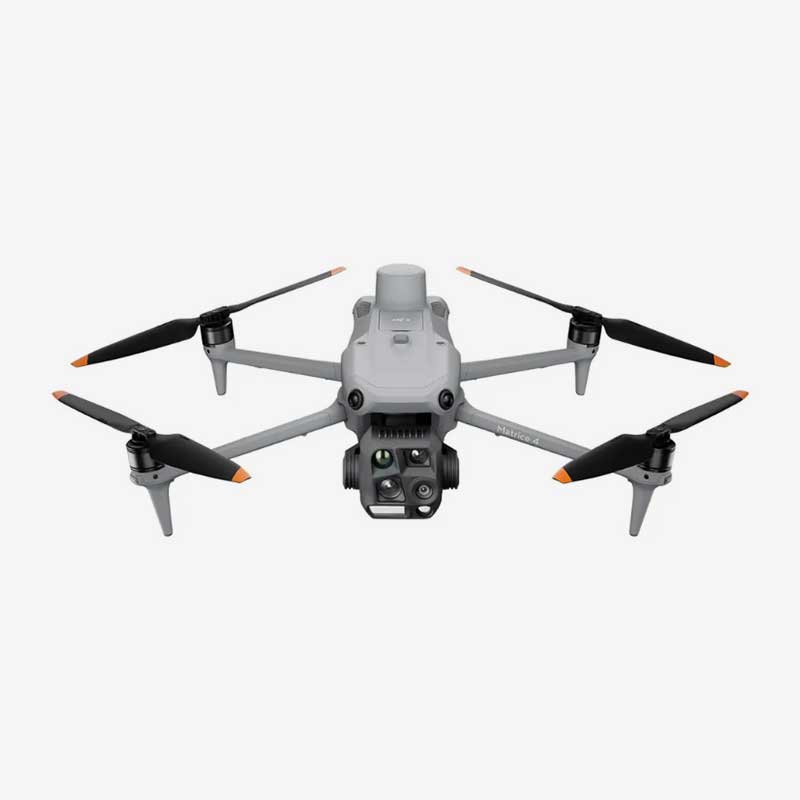
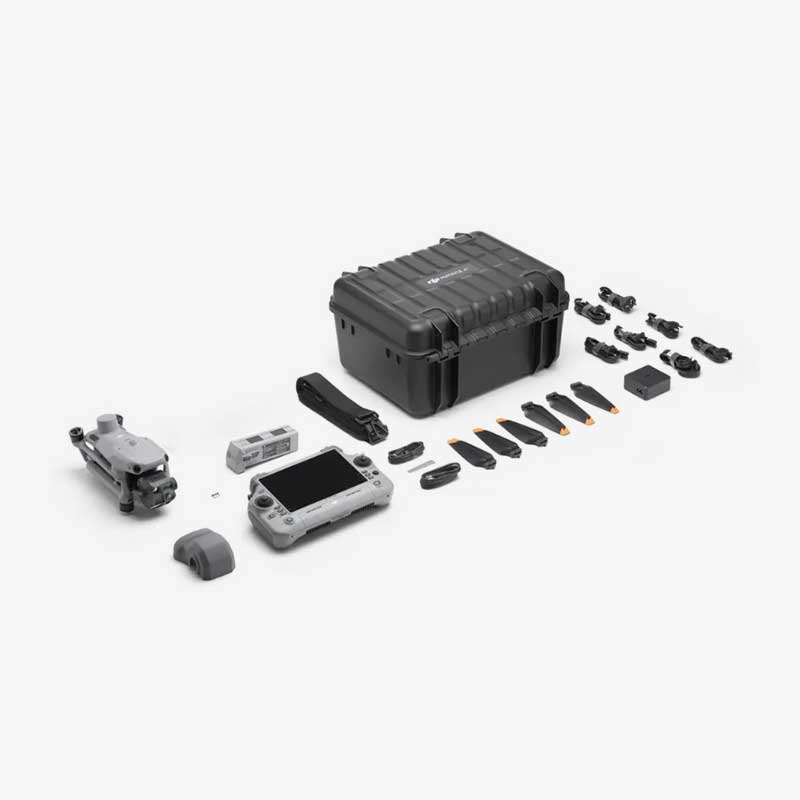
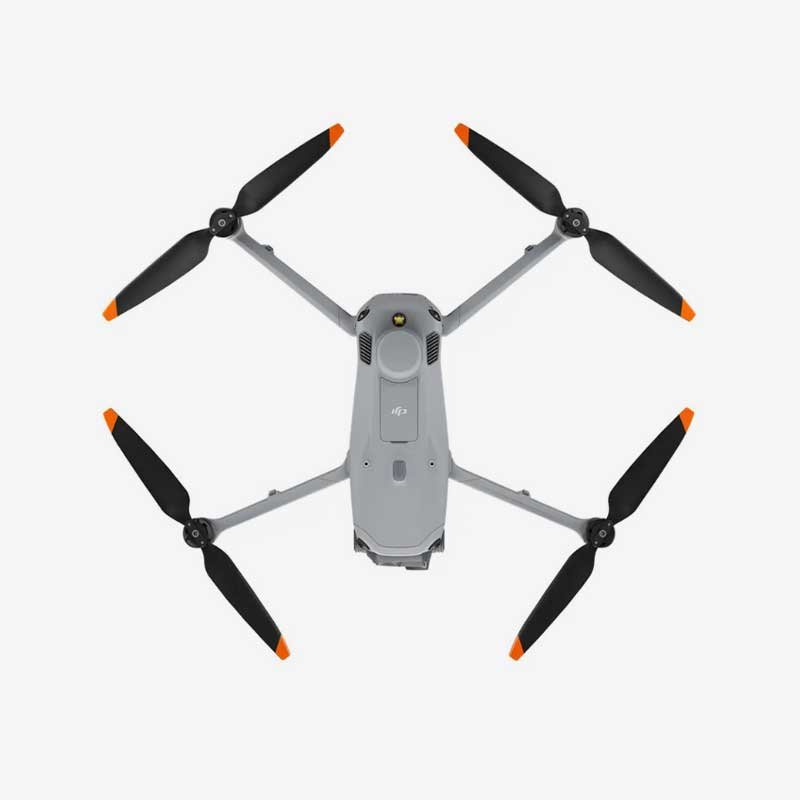
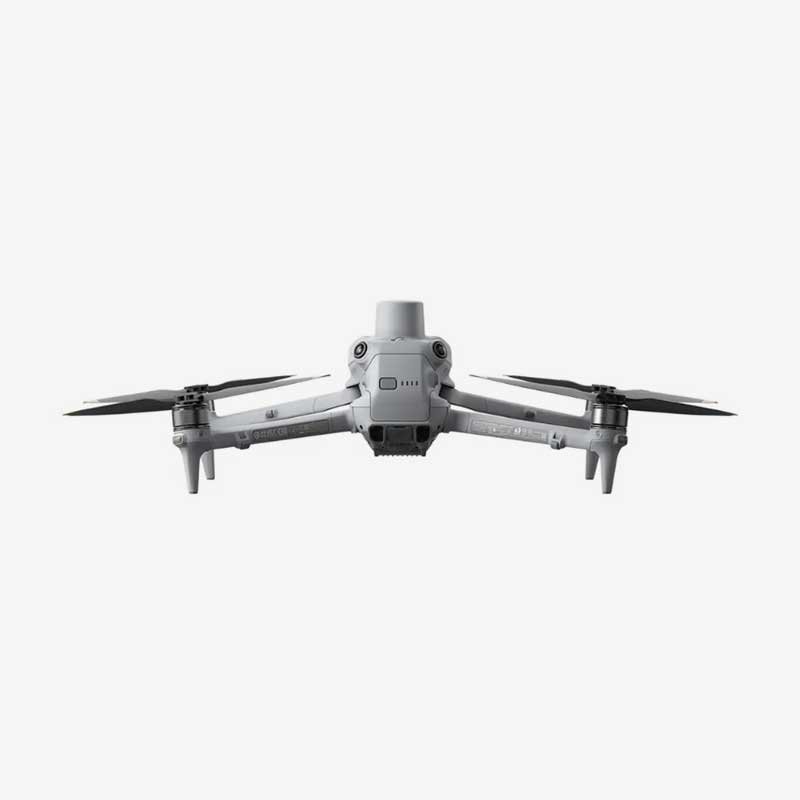
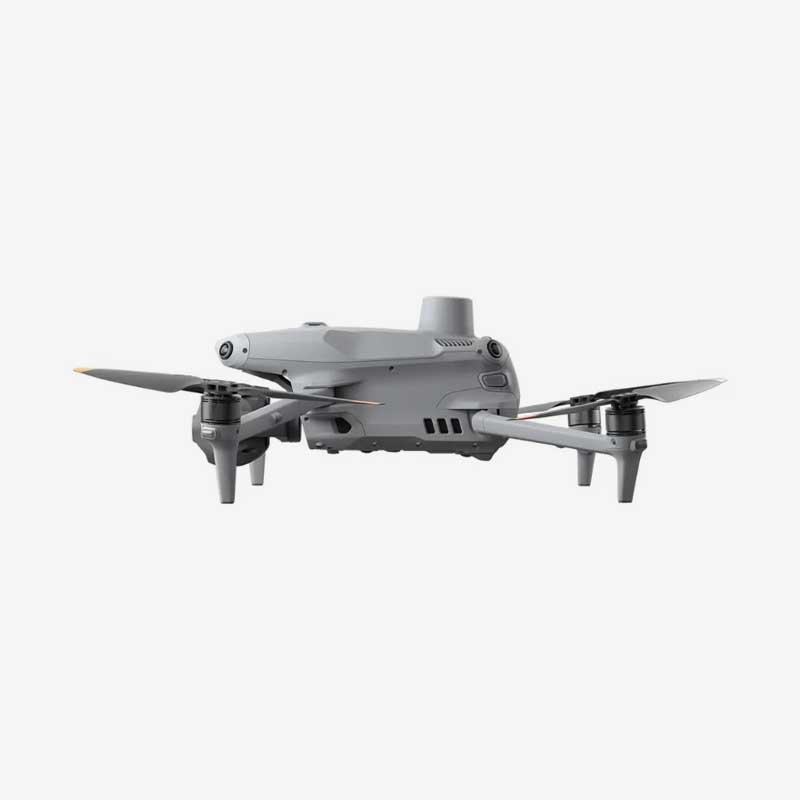
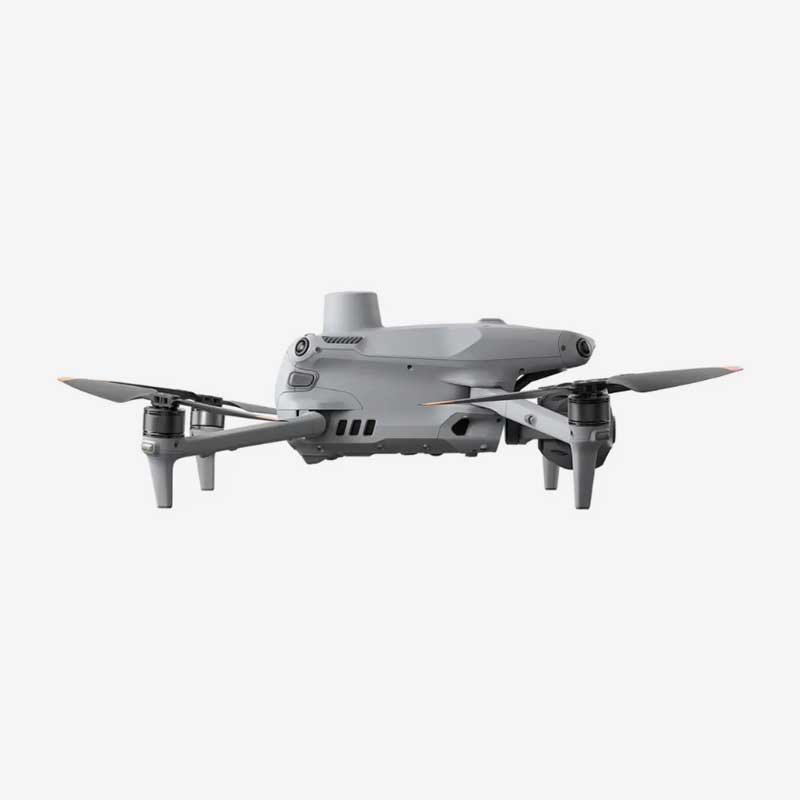
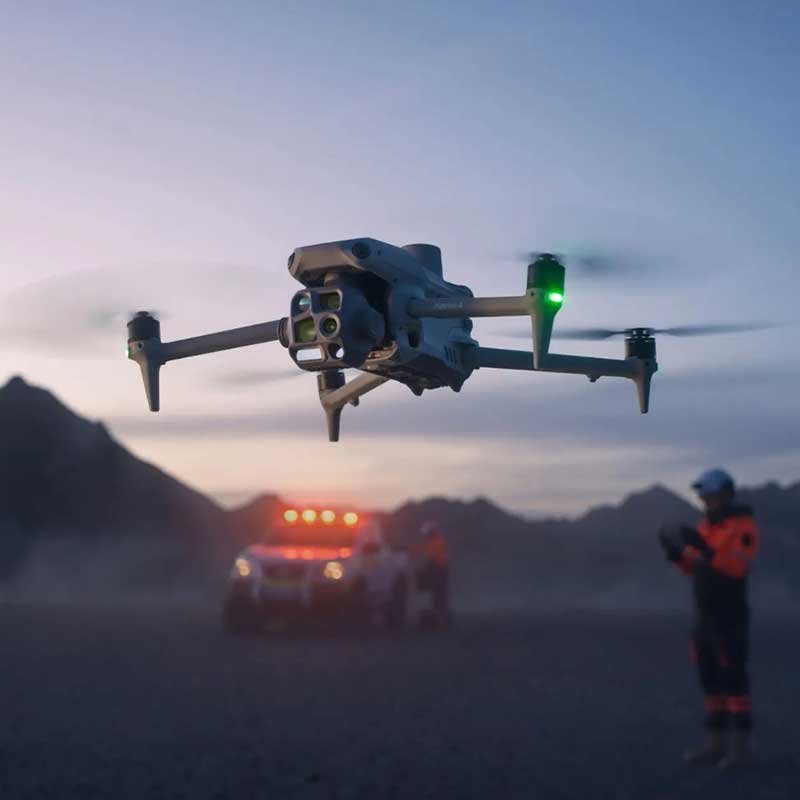
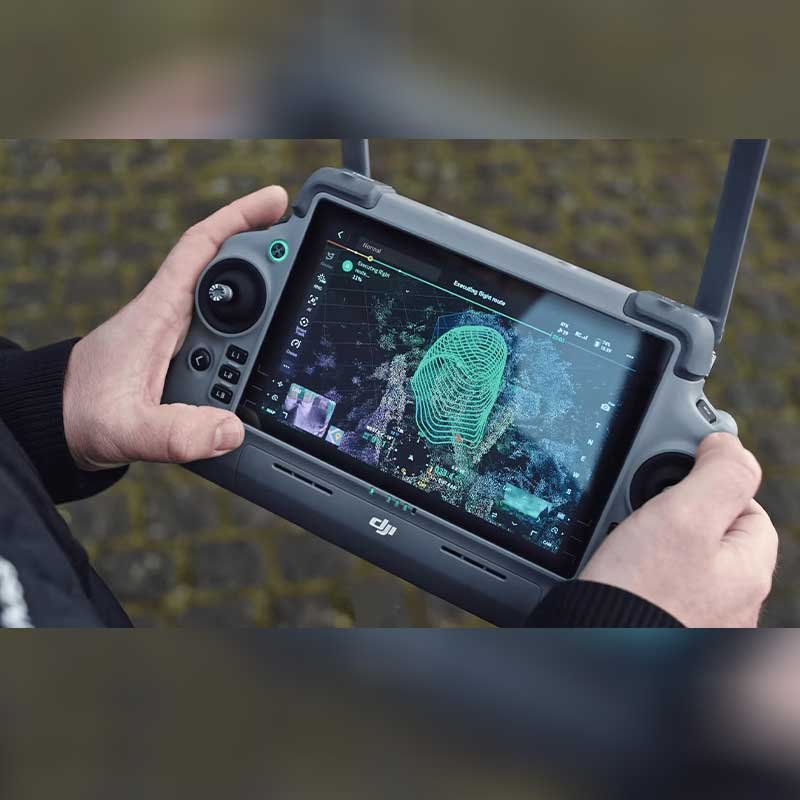

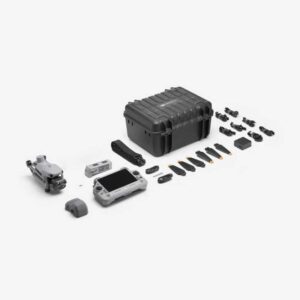
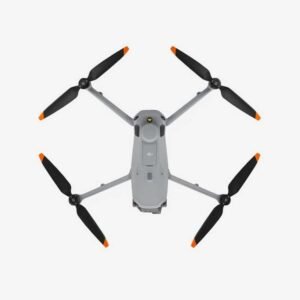
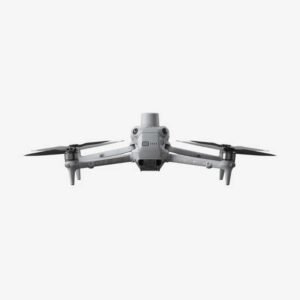
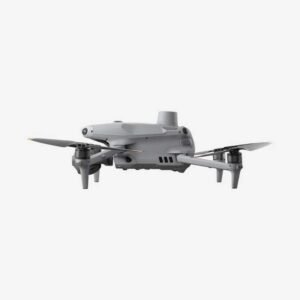
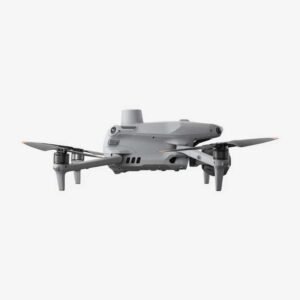
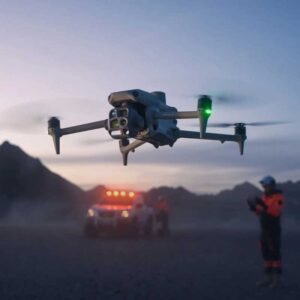
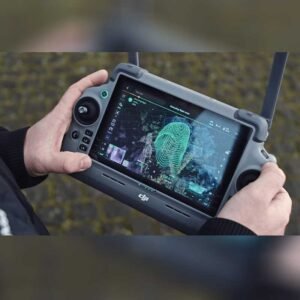
DJI Matrice 4T
0 out of 5
₹739,999.00 Original price was: ₹739,999.00.₹629,999.00Current price is: ₹629,999.00. incl. Gst
- Takeoff Weight: 1229 g (with low-noise propellers)
- Max Takeoff Weight: 1430 g (low-noise propellers)
- Folded Dimensions: 260.6 × 113.7 × 138.4 mm
- Unfolded Dimensions: 307.0 × 387.5 × 149.5 mm
- Max Payload: 200 g
- Propeller Size: 10.8 inch
- Flight Time: Up to 49 min (no wind, standard propellers)
- Max Flight Distance: 35 km (no wind, standard propellers)
- Max Speed: 21 m/s
- Max Altitude: 6000 m
- Wind Resistance: Up to 12 m/s
- Operating Temp Range: -10°C to 40°C
- Infrared Camera: 640×512, 30Hz, 12μm pixel pitch
- Thermal Sensitivity: ≤50mk@F1.0
- Thermal Temp Range: -20°C to 550°C (High & Low Gain)
- Laser Rangefinder: Up to 1800 m
- Digital Zoom: 16x Optical + 112x Hybrid (Visual), 28x (Thermal)
- Gimbal: 3-axis mechanical (tilt, roll, pan)
- Obstacle Sensing: Omnidirectional with binocular vision + 3D infrared
- Storage: microSD card (U3/Class10/V30 or above)
- Battery: 6741 mAh, 99.5 Wh, 46 min flight time (low-noise)
- Remote Controller: DJI RC Plus 2 with 7.02″ 1400-nit display
- Charging Hub: 100W, supports 4 batteries in sequence
- Accessories Support: AL1 Spotlight, AS1 Speaker with quick-mount system
Need Help? Chat with an Expert
- 9891098328
Free Shipping & Returns
Assured Quality
Online Support 24/7
Secure Payment
- Description
- Specification
- In The Box
- FAQ's
- Reviews (0)
Description
DJI Matrice 4T – Next-Level Aerial Power with Thermal Vision, Long Flight Time, and Tactical Precision
When your mission demands nothing less than precision, endurance, and intelligent visibility from above, the DJI Matrice 4T answers the call. Designed for professionals in public safety, inspection, mapping, and tactical operations, this drone is a rugged workhorse packed with advanced features—blending power, intelligence, and versatility into a single aerial platform.
With an ultra-stable 3-axis mechanical gimbal, cutting-edge obstacle sensing, dual-vision imaging systems (visual and thermal), and industry-leading zoom capabilities, the Matrice 4T is ready to take on demanding environments—day or night, calm or windy, hot or freezing. Whether you’re surveying a wildfire zone, inspecting critical infrastructure, or executing a search-and-rescue operation, this drone has been built from the motors up to perform under pressure.

Key Features of the DJI Matrice 4T
1. Robust Flight Performance with Long Endurance and High Altitude Support
The DJI Matrice 4T is engineered for extended aerial missions, boasting a flight time of up to 49 minutes in no-wind conditions with standard propellers. The drone’s maximum takeoff weight of 1430 g gives you enough headroom to carry essential payloads, including optional accessories like the AL1 spotlight or AS1 speaker. A maximum flight range of 35 kilometers and a top speed of 21 m/s ensure it covers vast areas efficiently—whether it’s patrolling perimeters, inspecting pipelines, or scanning disaster sites.
2. Compact Folding Design with Powerful Payload Capacity
Though highly capable in the air, the Matrice 4T is surprisingly compact on the ground. It folds down neatly to 260.6 × 113.7 × 138.4 mm, making it easy to transport in field kits or tactical bags. Once deployed, its unfolded footprint of 307.0 × 387.5 × 149.5 mm offers optimal stability for high-performance flight. The drone supports a maximum payload of 200 grams—enough to integrate specialized accessories while maintaining efficient flight behavior.
3. Advanced Thermal Imaging for All-Weather Visibility
Equipped with a professional-grade thermal camera, the Matrice 4T captures heat signatures at 640×512 resolution, with a 30Hz refresh rate and 12μm pixel pitch. With a temperature detection range of -20°C to 550°C and dual gain modes (High and Low), it’s perfect for fire monitoring, energy audits, and search operations. Whether you’re locating hotspots in a burning building or detecting a person in dense fog, this thermal camera delivers clarity where regular optics fail.
4. Extreme Zoom Capability for Distant Target Identification
Sometimes, getting close isn’t an option—so the Matrice 4T brings the subject to you. With a 16x optical zoom and up to 112x hybrid zoom on the visual camera, plus 28x zoom on the thermal camera, this drone provides precise identification without compromising safety or image quality. From spotting small defects on a powerline to tracking movement from a distance, every detail remains sharp and actionable.
5. 3-Axis Mechanical Gimbal for Rock-Solid Imaging
To keep visuals steady in every condition, the Matrice 4T features a 3-axis mechanical gimbal that provides real-time stabilization across tilt, roll, and pan. Whether you’re flying into the wind or hovering in place for a thermal scan, the footage remains level, crisp, and smooth—ready for post-analysis or live response decisions.
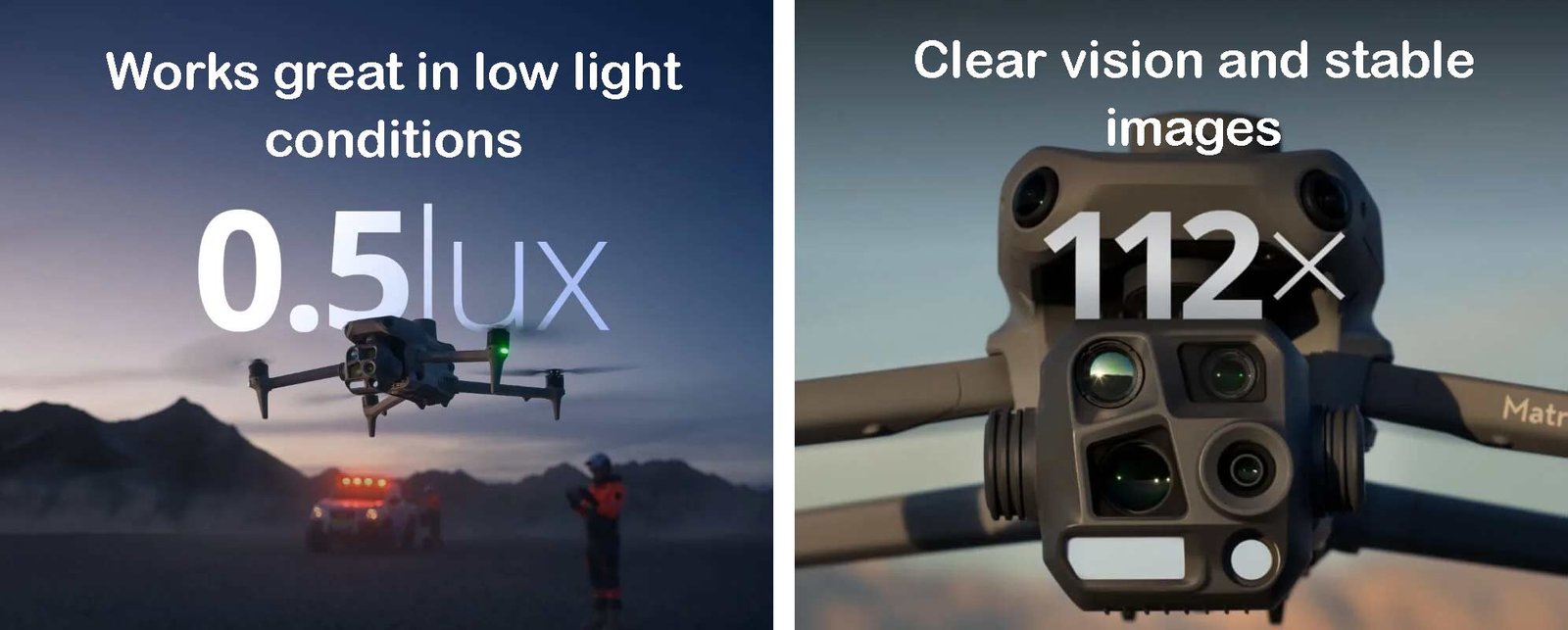
How to Clean
-
Turn Off and Remove Battery Before Cleaning
Always switch off the drone completely and remove the battery before cleaning. This prevents any accidental startup and ensures your hands are safe while cleaning delicate parts like sensors, gimbal, and propellers. -
Use a Soft Microfiber Cloth for Body and Gimbal
Take a clean, dry microfiber cloth and gently wipe the body and gimbal. Do not press hard—just softly clean the surface to remove dust, dirt, or fingerprints without scratching the finish. -
Clean Sensors and Camera Lens with Lens Cleaner
The Matrice 4T’s sensors and thermal/visual cameras are highly sensitive. Use lens-cleaning solution and a camera lens cloth to clean them gently. Avoid using tissue paper or cotton swabs, as they may leave scratches or fibers. -
Check and Clean the Propellers Carefully
Remove the propellers if needed, and wipe them with a soft damp cloth to remove any stuck dust, bugs, or residue. Let them dry completely before reattaching. Always inspect for any small cracks or chips. -
Don’t Use Water Directly or Harsh Liquids
Never spray water or cleaning agents directly onto the drone. Use only slightly damp cloths or specialized electronics cleaning wipes. Moisture inside electronics or vents can permanently damage internal circuits.
How to Take Care
-
Always Store in a Hard Case or Padded Bag
The Matrice 4T is a premium and sensitive drone, so don’t just place it on a shelf. Use a hard-shell carry case or foam-padded storage bag to avoid any accidental knocks, falls, or dust exposure. -
Avoid Full Battery Drain Before Charging
Never let the battery completely drain to 0%. Instead, recharge it when it reaches around 20–25%. This helps maintain battery health and ensures longer lifespan for your drone batteries. -
Do Regular Firmware and Calibration Updates
DJI releases frequent updates for better performance. Connect to the DJI RC Plus controller and update firmware whenever available. Also, recalibrate the sensors and gimbal once every few flights for accurate operation. -
Avoid Flying in Rain, Fog, or Extreme Temperatures
Though it’s a tough drone, try to avoid flights during heavy rain, thick fog, or extreme heat and cold. Moisture can damage internal systems, and extreme temperatures affect battery life and sensor accuracy. -
Inspect Before and After Every Flight
Check all parts—propellers, gimbal, sensors, and landing gear—before flying. After flying, do a quick check again to ensure nothing is loose, cracked, or bent. Early detection helps avoid major damage.
Safety Tips
-
Keep Away from People and Crowded Areas
Due to its size and power, never fly the Matrice 4T near people, vehicles, or animals. Maintain a safe distance and choose open spaces for takeoff and landing to avoid accidents or injury. -
Calibrate Compass and IMU in New Areas
When flying in a new or unfamiliar place, always recalibrate the compass and IMU. This prevents GPS drift and ensures the drone remains stable and responsive during flight. -
Be Mindful of No-Fly Zones and Altitude Limits
Always check for restricted areas or no-fly zones using the DJI app or a verified aviation map. Follow the altitude regulations in your area to stay compliant and avoid penalties. -
Handle Batteries with Care – Never Puncture or Crush
The Matrice 4T uses high-capacity batteries. Always handle them carefully. Don’t pierce, drop, crush, or store near fire. If a battery looks swollen or damaged, stop using it immediately. -
Keep Firmware and Obstacle Avoidance On
Keep obstacle sensing enabled at all times. The Matrice 4T has advanced omnidirectional sensors—so use them. Also, keep firmware up to date to ensure the drone avoids trees, wires, and buildings.
Why You Should Choose This Product
-
Powerful Thermal Imaging and Zoom Combo
The Matrice 4T comes with a 640×512 thermal camera and a zoom lens that gives you 16x optical and 112x hybrid zoom. Whether it’s search & rescue, inspection, or surveillance, this drone sees everything — day or night. -
Super Long Flight Time with Intelligent Batteries
It can fly up to 49 minutes, covering up to 35 km on one charge! With its smart battery system and quick-charging hub, you get more missions done with less downtime. Great for professionals who need performance on demand. -
Rock-Solid in Harsh Weather and Tough Environments
With wind resistance up to 12 m/s and operation temperatures from -10°C to 40°C, this beast doesn’t get scared of cold mornings or warm afternoons. It’s built to survive where other drones give up. -
Unmatched Obstacle Detection and Safety Tech
The 3D infrared vision and omnidirectional obstacle sensing means this drone avoids collisions like a pro. It’s a lifesaver when flying in tight or complex areas—no more stress about crashing into trees or poles. -
Ideal for Critical Missions and Professional Work
If you’re into mapping, firefighting, police work, or large-scale inspections, the DJI Matrice 4T gives you all the sensors, endurance, and camera tech you need in one compact and foldable flying machine.
Aircraft
| Category | Specification |
|---|---|
| Takeoff Weight (with propellers) | 1219 g* |
| Takeoff Weight (with Low-Noise propellers) | 1229 g* |
| Max Takeoff Weight | Standard Propellers: 1420 g Low-Noise Propellers: 1430 g |
| Dimensions | Folded: 260.6×113.7×138.4 mm (L×W×H) Unfolded: 307.0×387.5×149.5 mm (L×W×H) <small>Maximum dimensions excluding propellers</small> |
| Max Payload | 200 g |
| Propeller Size | 10.8 in |
| Diagonal Wheelbase | 438.8 mm |
| Max Ascent Speed | 10 m/s |
| Max Ascent Speed With Accessories | 6 m/s |
| Max Descent Speed | 8 m/s |
| Max Descent Speed With Accessories | 6 m/s |
| Max Horizontal Speed (no wind) | 21 m/s <small>21 m/s forward, 18 m/s backward, 19 m/s sideways*</small> <small>* No faster than 19 m/s in Sport mode in EU regions.</small> |
| Max Altitude | 6000 m |
| Max Operating Altitude with Payload | 4000 m |
| Max Flight Time (no wind) | 49 min (standard propellers) 46 min (low-noise propellers) |
| Max Hover Time (no wind) | 42 min (standard propellers) 39 min (low-noise propellers) |
| Max Flight Distance (no wind) | 35 km (standard propellers) 32 km (low-noise propellers) |
| Max Wind Resistance | 12 m/s* <small>* During takeoff and landing</small> |
| Max Pitch Angle | 35° |
| Operating Temperature | -10℃ to 40℃ (14°F to 104°F) |
| GNSS | GPS + Galileo + BeiDou + GLONASS* <small>* GLONASS is available only with RTK module enabled</small> |
| Hovering Accuracy (windless/breezy) | ±0.1 m (Vision System) ±0.5 m (GNSS) ±0.1 m (RTK) |
| RTK GNSS Accuracy | RTK Fix: 1 cm + 1 ppm (horizontal) 1.5 cm + 1 ppm (vertical) |
| Internal Storage | N/A |
| Ports | E-Port × 1: Supports DJI/third-party PSDK devices (no hot-swapping) E-Port Lite × 1: Supports USB connection to DJI tuning software and some third-party devices |
| Propeller Models | 1157F (standard) 1154F (low noise) |
| Beacon | Built into the aircraft |
Camera
| Category | Specification (Matrice 4T) |
|---|---|
| Image Sensor | Wide: 1/1.3″ CMOS, 48 MP Medium Tele: 1/1.3″ CMOS, 48 MP Telephoto: 1/1.5″ CMOS, 48 MP |
| Lens – Wide | FOV: 82° Equivalent Focal Length: 24 mm Aperture: f/1.7 Focus: 1 m to ∞ |
| Lens – Medium Tele | FOV: 35° Equivalent Focal Length: 70 mm Aperture: f/2.8 Focus: 3 m to ∞ |
| Lens – Telephoto | FOV: 15° Equivalent Focal Length: 168 mm Aperture: f/2.8 Focus: 3 m to ∞ |
| ISO Range | Normal Mode: ISO 100 to 25600 Night Scene Mode: Wide: ISO 100 to 409600 Medium Tele: ISO 100 to 409600 Tele: ISO 100 to 819200 |
| Shutter Speed | 2–1/8000 s |
| Max Photo Resolution | Wide: 8064 × 6048 Medium Tele: 8064 × 6048 Telephoto: 8192 × 6144 |
| Minimum Photo Interval | 0.7 s |
| Still Photography Modes | Wide: – Single: 12 MP / 48 MP – Interval: 12 MP / 48 MP – JPEG Intervals: 0.7 / 1 / 2 / 3 / 5 / 7 / 10 / 15 / 20 / 30 / 60 s – Smart Shooting: 12 MP – Panorama: 12 MP (raw), 100 MP (stitched) Medium Tele: – Single: 12 MP / 48 MP – Interval: 12 MP / 48 MP – JPEG Intervals: same as above – Smart Shooting: 12 MP Telephoto: – Single: 12 MP / 48 MP – Interval: 12 MP / 48 MP – JPEG Intervals: same as above – Smart Shooting: 12 MP |
| Video Codec and Resolution | Format: H.264 / H.265 Strategy: CBR, VBR Resolutions: 4K: 3840 × 2160 @30fps FHD: 1920 × 1080 @30fps |
| Max Video Bitrate | H.264: 60 Mbps H.265: 40 Mbps |
| Photo Format | JPEG |
| Video Format | MP4 (MPEG-4 AVC/H.264) |
| Digital Zoom (Telephoto) | 16× optical, up to 112× hybrid zoom |
| Supported File System | exFAT |
NIR Auxiliary Light
| Component | Specification |
|---|---|
| Infrared Illumination | Yes |
| FOV | 5.7° ± 0.3° |
Laser Module
| Component | Specification |
|---|---|
| Laser Rangefinding | |
| Measurement Range | 1800 m (1 Hz) @ 20% reflectivity target* |
| Oblique Incidence Range (1:5 Oblique Distance) | 600 m (1 Hz) |
| Blind Zone | 1 m |
| Distance Measurement Accuracy | 1–3 m: System Error < 0.3 m, Random Error < 0.1 m @1σ Other Distances: ±(0.2 + 0.0015D), where D = distance in meters |
| Note | *Performance degradation may occur in rainy or foggy conditions |
Infrared Thermal Camera
| Component | Specification |
|---|---|
| Thermal Imager Type | Uncooled Vanadium Oxide (VOx) |
| Warning | Do NOT expose the infrared camera lens to intense energy sources (sun, lava, lasers), or permanent sensor damage may occur. |
| Resolution | 640 × 512 |
| Pixel Pitch | 12 μm |
| Frame Rate | 30 Hz |
| Lens | DFOV: 45° ± 0.3° Focal Length: 53 mm equivalent Aperture: f/1.0 Focus: 5 m to ∞ |
| Sensitivity (NETD) | ≤50 mk @ f/1.0 |
| Temperature Measurement Method | Spot Meter, Area Measurement |
| Temperature Measurement Range | High Gain: -20℃ to 150℃ (-4°F to 302°F) Low Gain: 0℃ to 550℃ (32°F to 1022°F) |
| Palettes | White Hot, Black Hot, Tint, Iron Red, Hot Iron, Arctic, Medical, Fulgurite, Rainbow 1, Rainbow 2 |
| Photo Format | JPEG (8-bit), R-JPEG (16-bit) |
| Video Resolution | 1280 × 1024 @ 30fps (Super Resolution On, Night Mode Off) 640 × 512 @ 30fps (All other conditions) |
| Video Bitrate | H.264: 6.5 Mbps (640×512), 12 Mbps (1280×1024) H.265: 5 Mbps (640×512), 8 Mbps (1280×1024) |
| Video Format | MP4 |
| Still Photography Modes | Single & Interval Shots: 1280×1024 / 640×512 Interval Timings: 0.7 / 1 / 2 / 3 / 5 / 7 / 10 / 15 / 20 / 30 / 60 seconds |
| Photo Resolution | 1280 × 1024 (with Super Resolution) 640 × 512 (without Super Resolution) |
| Digital Zoom | 28x |
| Infrared Wavelength | 8 μm to 14 μm |
| Temperature Measurement Accuracy | High Gain: ±2℃ or ±2% (whichever is greater) Low Gain: ±5℃ or ±3% (whichever is greater) |
Gimbal
| Component | Specification |
|---|---|
| Stabilization System | 3-axis (tilt, roll, pan) |
| Gimbal Mechanical Limits | Tilt: -140° to 113° Roll: -52° to 52° Pan: -65° to 65° |
| Soft Limits | Tilt: -90° to 35° Roll: -47° to 47° Pan: -60° to 60° |
| Controllable Rotation Range | Tilt: -90° to 35° Pan: Not controllable |
| Max Control Speed (Tilt) | 100°/s |
| Angular Vibration Range | ±0.007° |
| Yaw Axis | Manual operation: Not controllable MSDK interface: Controllable |
| Ingress Protection Rating | No standard protection level |
| Operating Temperature | -10°C to 40°C (14°F to 104°F) |
Sensing
| Section | Specification |
|---|---|
| Sensing Type | Omnidirectional binocular vision system, with a 3D infrared sensor at the bottom |
| Forward | Binocular Measurement Range: 0.4–22.5 m Obstacle Detection Range: 0.4–200 m Obstacle Avoidance Speed: ≤21 m/s FOV: 90° (H), 135° (V) |
| Backward | Binocular Measurement Range: 0.4–22.5 m Obstacle Detection Range: 0.4–200 m Obstacle Avoidance Speed: ≤21 m/s FOV: 90° (H), 135° (V) |
| Lateral (Left/Right) | Measurement Range: 0.5–32 m Obstacle Detection Range: 0.5–200 m Obstacle Avoidance Speed: ≤21 m/s FOV: 90° (H), 90° (V) |
| Downward | Measurement Range: 0.3–18.8 m Obstacle Avoidance Speed: ≤10 m/s FOV: 160° (front/rear), 160° (left/right) |
| Operating Environment (Forward, Backward, Left, Right, Upward) | Surface with detailed texture, adequate lighting |
| Operating Environment (Downward) | Ground with rich texture, diffuse reflective surface with reflectivity >20% (e.g., walls, trees, people) Lighting should be no less than nighttime city illumination level |
Video Transmission
| Category | Specification |
|---|---|
| Video Transmission System | O4 Enterprise |
| Live View Quality | 1080p/30fps (Remote Controller) |
| Operating Frequency | 2.400–2.4835 GHz 5.725–5.850 GHz 5.150–5.250 GHz (CE) |
| Transmitter Power (EIRP) | 2.4 GHz: ≤33 dBm (FCC), ≤20 dBm (CE/SRRC/MIC) 5.8 GHz: <33 dBm (FCC), <30 dBm (SRRC), <14 dBm (CE) 5.15–5.25 GHz: <23 dBm (FCC/CE) |
| Max Transmission Distance (Unobstructed, No Interference) | 25 km (FCC) 12 km (CE) 12 km (SRRC) 12 km (MIC) |
| Max Transmission Distance (With Interference) | Strong Interference (City Centers): ~1.5–5 km Medium Interference (Suburban): ~5–15 km Micro Interference (Seaside/Suburbs): ~15–25 km |
| Max Download Speed | 20 MB/s |
| Latency | 130 ms (Under near-field, interference-free condition, using 1x lens) |
| Antenna | 8 antennas, 2T4R |
| Others | Cellular Dongle Compartment |
Memory Card
| Category | Specification / Recommended Models |
|---|---|
| Supported SD Cards | U3 / Class 10 / V30 or above is required Or use a memory card from the recommended list |
| Recommended microSD Cards | – Lexar 1066x 64GB U3 A2 V30 microSDXC – Lexar 1066x 128GB U3 A2 V30 microSDXC – Lexar 1066x 256GB U3 A2 V30 microSDXC – Lexar 1066x 512GB U3 A2 V30 microSDXC – Kingston Canvas GO! Plus 64GB U3 A2 V30 microSDXC – Kingston Canvas GO! Plus 128GB U3 A2 V30 microSDXC – Kingston Canvas GO! Plus 256GB U3 A2 V30 microSDXC – Kingston Canvas GO! Plus 512GB U3 A2 V30 microSDXC |
Intelligent Flight Battery
| Category | Specification |
|---|---|
| Capacity | 6741 mAh |
| Standard Voltage | 14.76 V |
| Max Charging Voltage | 17.0 V |
| Cell Type | Li-ion 4S |
| Energy | 99.5 Wh |
| Weight | 401 g |
| Recharging Temperature | 5°C to 40°C (41°F to 104°F) |
| Discharge Rate | 4C |
| Max Charging Power | 1.8C |
| Supports Low-Temp Charging | Not supported |
| Cycle Count | 200 |
Power Adapter (100W)
| Category | Specification |
|---|---|
| Input | 100-240 V (AC), 50-60 Hz, 2.5 A |
| Output | Max. 100 W (total) When both ports are used, the max output power of one port is 82 W, and the charger dynamically allocates power based on load |
| Rated Power | 100 W |
Charging Hub
| Category | Specification |
|---|---|
| Input | USB-C: 5–20 V, max 5 A |
| Output | Battery Interface: 11.2 V to 17 V |
| Rated Power | 100 W |
| Recharging Type | Charges 4 batteries in sequence |
| Supported Modes | Standard Mode (100% SOC), Standby Mode (90% SOC) |
| Compatible Battery | DJI Matrice 4E/T Series Intelligent Flight Battery |
| Charging Temperature | 5°C to 40°C (41°F to 104°F) |
DJI RC Plus 2 Enterprise
| Category | Specification |
|---|---|
| Video Transmission System | O4 Enterprise |
| Max Transmission Distance | 25 km (FCC), 12 km (CE/SRRC/MIC) |
| Transmission Notes | Measured in unobstructed, interference-free environments. One-way, non-return flights. Always monitor RTH warnings in DJI Pilot 2. |
| Operating Band (Image Transmission) | 2.4000–2.4835 GHz, 5.725–5.850 GHz, 5.1 GHz (receive only) |
| Antenna | 2T4R, built-in multi-beam high-gain antenna |
| Transmission Power (EIRP) | 2.4 GHz: <33 dBm (FCC), <20 dBm (CE/SRRC/MIC) 5.1 GHz: <23 dBm (CE) 5.8 GHz: <33 dBm (FCC), <14 dBm (CE), <30 dBm (SRRC) |
| 4G Transmission | DJI Cellular Dongle 2 |
| Wi-Fi Protocol | Wi-Fi Direct, Wireless Display, IEEE 802.11a/b/g/n/ac/ax; 2×2 MIMO; Dual Band Simultaneous (DBS); up to 1774.5 Mbps |
| Wi-Fi Operating Bands | 2.4000–2.4835 GHz, 5.150–5.250 GHz, 5.725–5.850 GHz |
| Wi-Fi Transmitter Power (EIRP) | 2.4 GHz: <26 dBm (FCC), <20 dBm (CE/SRRC/MIC) 5.1 GHz: <23 dBm (FCC) 5.8 GHz: <23 dBm (FCC/SRRC), <14 dBm (CE) |
| Bluetooth Protocol | Bluetooth 5.2 |
| Bluetooth Frequency | 2.400–2.4835 GHz |
| Bluetooth Transmitter Power | <10 dBm |
| Screen Resolution | 1920 × 1200 |
| Screen Size | 7.02 inches |
| Screen Frame Rate | 60 fps |
| Brightness | 1400 nits |
| Touchscreen Control | 10-point multi-touch |
| Built-in Battery | 2S2P 18650 Li-ion, 6500 mAh @ 7.2 V, 46.8 Wh |
| External Battery | Optional WB37, 4920 mAh @ 7.6 V, 37 Wh |
| Charging Type | PD fast charging (up to 20V/3.25A), USB-C |
| Storage Capacity | 128 GB ROM + microSD card support |
| Charging Time | 2 hrs for internal or combined battery when RC is off |
| Internal Battery Runtime | 3.8 hrs |
| External Battery Runtime | 3.2 hrs |
| Output Port | HDMI 1.4 |
| Indicators | Status, power, and permission lights (adjustable brightness) |
| Speaker | Buzzer supported |
| Audio | Array microphone |
| Operating Temperature | -20°C to 50°C |
| Storage Temperature | 1 month: -30°C to 45°C 1–3 months: -30°C to 35°C 3–12 months: -30°C to 30°C |
| Recharging Temperature | 5°C to 40°C |
| Supported Aircraft | Matrice 4T / 4E |
| GNSS | GPS, Galileo, BeiDou – supports dynamic Home Point refresh |
| Dimensions | 268 × 163 × 94.5 mm (L × W × H), incl. antenna folded and handles |
| Weight | 1.15 kg (without external battery) |
| Model | TKPL 2 |
| System Version | Android 11 |
| External Interfaces | HDMI 1.4, SD3.0, USB-C (OTG & PD 65W), USB-A (USB 2.0) |
| Accessories | Optional strap/waist support |
AL1 Spotlight
| Parameter | Details |
|---|---|
| Weight | 99 g (including bracket) Approx. 91 g (excluding bracket) |
| Dimensions | 95 × 164 × 30 mm (with bracket) 79 × 164 × 28 mm (without bracket) |
| Max. Power | 32 W |
| Illuminance | 4.3 ± 0.2 lux @ 100 meters 17 ± 0.2 lux @ 50 meters |
| Illumination Angle | 23° (10% relative illumination) |
| Effective Illumination Area | 1,300 m² @ 100 m (Normal Mode) 2,200 m² @ 100 m (Wide FOV Mode) |
| Operating Modes | Always-on mode and strobe mode |
| Gimbal Tilt Range | Structural: -140° to 50° Controllable: -90° to 35° |
| Max Control Speed (Tilt) | 120°/s |
| Gimbal Alignment Accuracy | ±0.1° |
| Operating Temperature | -20°C to 50°C (-4°F to 122°F) |
| Mounting | Quick-release hand-tightened screws |
| Note | Data measured at 25°C in lab with spotlight installed separately |
AS1 Speaker
| Parameter | Details |
|---|---|
| Weight | 92.5 g (including bracket) Approx. 90 g (excluding bracket) |
| Dimensions | 73 × 70 × 52 mm (with bracket) 73 × 70 × 47 mm (without bracket) |
| Max. Power | 15 W |
| Max. Volume | 114 dB @ 1 meter |
| Effective Broadcast Distance | 300 meters |
| Broadcast Modes | – Real-time broadcasting (with echo suppression*) – Recorded broadcasting – Media import (simultaneous transmission and playback) – Text-to-speech (supports Chinese & English)** |
| Operating Temperature | -20°C to 50°C (-4°F to 122°F) |
| Mounting | Quick-release hand-tightened screws |
| Note | *Firmware upgrade required for echo suppression **TTS supports only Chinese & English |
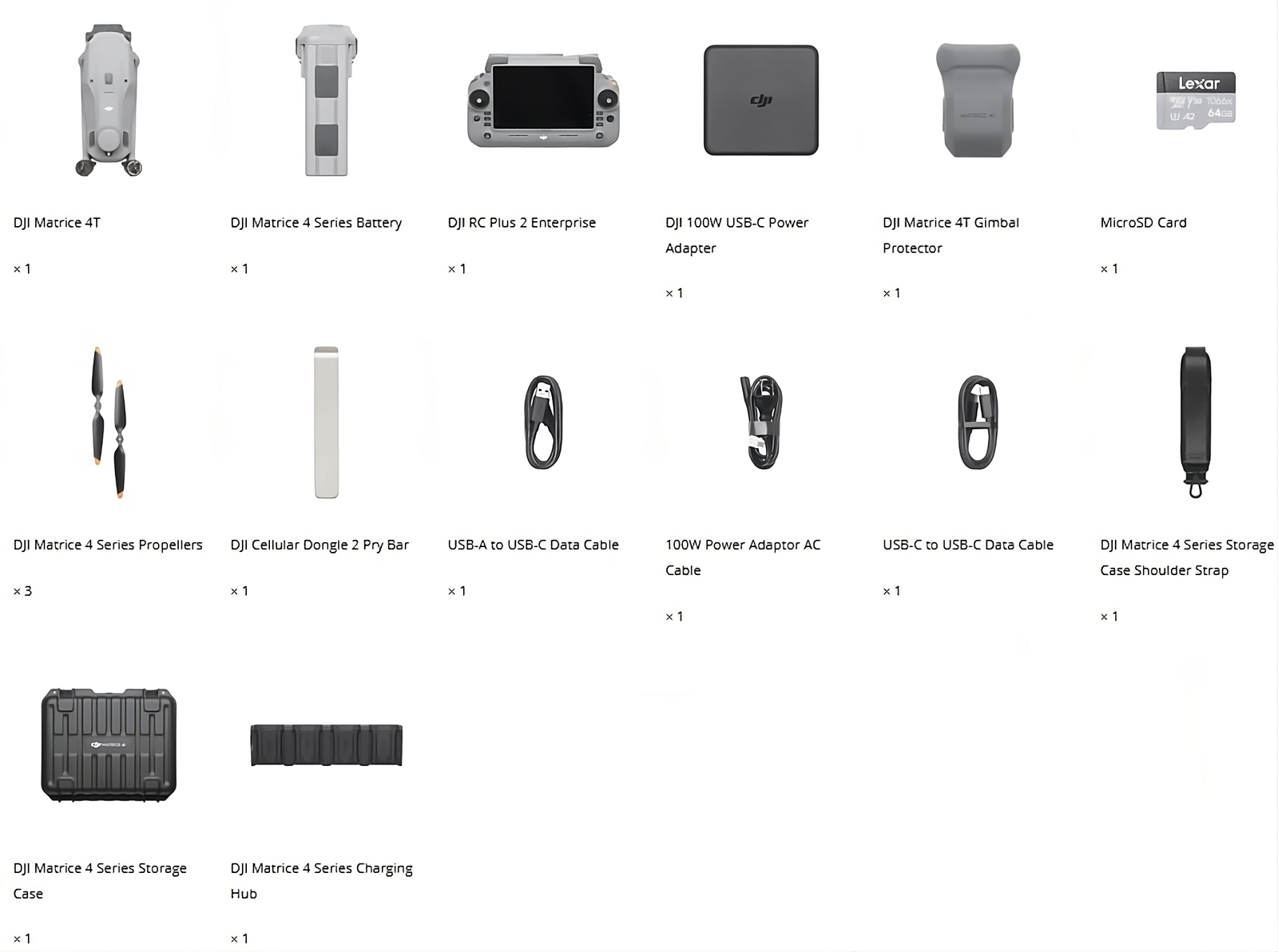
What should I keep in mind while using the thermal camera on the DJI Matrice 4T?
-
Do not point the thermal camera at strong heat sources like the sun, lava, or laser beams—this can burn the sensor and cause permanent damage.
-
Make sure the lens stays clean and free of dust for accurate thermal readings.
-
Let the camera warm up for a few minutes after powering on so the sensor can stabilize.
-
Try to avoid flying in extreme lighting or reflective environments, as it can affect image accuracy.
-
Fly at a steady height and speed to get clear and consistent thermal images.
Can I use the zoom camera on the DJI Matrice 4T for mapping without ground control points (GCPs)?
-
No, the zoom (tele) camera on the DJI Matrice 4T is not designed for mapping without GCPs.
-
If you need to map without ground control points, you should use the wide-angle camera on the DJI Matrice 4E, which supports that feature.
-
The zoom camera is mainly used for inspections, surveillance, and visual zooming, not for generating accurate mapping data.
Can I remove the RTK module from the DJI Matrice 4T?
No, the RTK module on the DJI Matrice 4T is built-in and cannot be removed. It is an integrated part of the drone’s design and essential for precise positioning.
Does the DJI Matrice 4T support Smart Oblique Capture?
-
Yes, the DJI Matrice 4T supports Smart Oblique Capture through the oblique collection function of the area route.
-
This feature allows the drone to capture images from multiple angles in one flight, making it ideal for detailed 3D modeling and mapping.
How is the thermal camera on the Matrice 4T beneficial?
The thermal camera allows you to detect heat even in poor visibility, which is essential for spotting fire hotspots or finding missing persons during nighttime operations.
How many versions are there in the DJI Matrice 4 Series? What’s the difference between them?
DJI Matrice 4 Series has two versions – DJI Matrice 4T and DJI Matrice 4E.
The Matrice 4T comes with a 1/1.3-inch CMOS 48MP wide-angle camera, a 1/1.3-inch CMOS 48MP medium telephoto camera, a 1/1.5-inch CMOS 48MP telephoto camera, a thermal camera, a near-infrared (NIR) light, and a laser rangefinder. It’s specially made for thermal imaging and performs well even at night.
The Matrice 4E includes a 4/3-inch CMOS 20MP wide-angle camera, a 1/1.3-inch CMOS 48MP medium telephoto camera, a 1/1.5-inch CMOS 48MP telephoto camera, and a laser rangefinder. It offers strong imaging performance but doesn’t have a thermal sensor.
Is DJI Matrice 4 Series waterproof?
No, this drone is not waterproof. Keep it away from water. If it starts raining during the flight, land the drone immediately and do not use it again until it’s fully dry from inside and outside.
How do I activate the DJI Matrice 4 Series?
When using the DJI RC Plus 2 Enterprise Edition for the first time, connect to the internet using Wi-Fi or a phone hotspot. Follow the on-screen steps on the controller to activate it. After that, open the DJI Pilot 2 app, connect it to the aircraft, and complete the activation process as guided on the screen.
If I don’t have a 4G dongle with SIM card, how can I use Network RTK with the DJI Matrice 4 Series?
You can still use Network RTK by connecting the remote controller to a Wi-Fi network.
Are DJI Matrice 4 Series RTK services linked to the remote controller or the aircraft?
They are linked to the remote controller.
Can the telephoto camera on DJI Matrice 4 Series be used for mapping without GCPs?
No, the telephoto camera cannot be used for mapping without GCPs. However, the wide-angle camera on the Matrice 4E does support mapping without GCPs.
What safety measures should I follow while using the infrared camera on the Matrice 4T?
Do NOT aim the infrared camera lens at strong energy sources like sunlight, lava, or lasers. Doing so could permanently damage the sensor.
Will it harm the gimbal if the Matrice 4 aircraft is powered on without unfolding the arms?
No, the gimbal won’t be damaged. However, it’s better to unfold the arms before powering on the drone to prevent any contact or collision between the gimbal and the arms during the self-check process.
Can the RTK module be removed from the DJI Matrice 4 Series?
No, the RTK module is built-in and cannot be removed.
Do DJI drones need to be registered in India?
Yes, all DJI drones above 250 grams must be registered on the Digital Sky Platform and get a UIN (Unique Identification Number) from DGCA.
Only nano drones (≤250g) used for recreational purposes are exempt from registration.
Does DJI Matrice 4 Series support dual controls?
No, the DJI Matrice 4 Series does not support dual remote controller operation.
What remote controllers are supported by the DJI Matrice 4 Series?
The DJI Matrice 4 Series supports two types of controllers: DJI RC Plus 2 Enterprise Edition and DJI RC Plus 2 Enterprise Enhanced Edition.
Out of these, the DJI RC Plus 2 Enterprise Edition comes as the default controller with the Matrice 4 Series. The Enhanced Edition must be purchased separately and is designed for advanced industrial applications.
What are the differences between DJI RC Plus 2 Enterprise Edition and DJI RC Plus 2 Enterprise Enhanced Edition?
The main difference is that the Enhanced Edition includes additional expansion ports and interfaces, making it compatible with more professional accessories and third-party devices.
Do the DJI RC Plus 2 Enterprise Edition and Enhanced Edition support charging with other USB-C chargers?
Yes, both versions of the RC Plus 2 support charging via other USB-C chargers. However, to maintain fast and stable charging, it is recommended to use the DJI 100W Portable Charger or any USB-C charger above 100W that supports the PD (Power Delivery) protocol.
Do DJI RC Plus 2 Enterprise Edition and Enhanced Edition support MSDK?
Yes, both controllers support DJI’s Mobile SDK (MSDK).
Does the DJI RC Plus 2 Enterprise Remote Controller support the DJI Mavic 3 Enterprise Series?
No, the DJI RC Plus 2 Enterprise Edition is not compatible with the DJI Mavic 3 Enterprise Series.
How to charge the DJI Matrice 4 Series battery?
The DJI Matrice 4 Series batteries can only be charged using the DJI Matrice 4 Series Battery Charging Hub.
What functions does the DJI Matrice 4 Series Battery Charging Hub support?
The Battery Charging Hub supports two charging modes, which can be selected using the mode switch located on the side of the hub:
-
Standard Mode: Charges each battery to 100% one by one, ensuring full capacity for long missions.
-
Ready-to-Fly Mode: Charges each battery up to 90% sequentially and maintains that level, allowing for faster deployment in the field.
How long does it take to fully charge a DJI Matrice 4 Series battery?
-
In Standard Mode, it takes around 78 minutes to fully charge one Intelligent Flight Battery.
-
In Ready-to-Fly Mode, it takes about 60 minutes to charge one battery to 90% capacity.
Can the DJI Matrice 4 Series Battery Charging Hub be powered using other USB-C chargers?
Yes, it supports charging from other USB-C chargers. However, for best performance, it’s recommended to use the DJI 100W Portable Charger or any USB-C charger above 100W that supports the PD (Power Delivery) protocol.
Which port should be used on the DJI 100W Portable Charger to power the Charging Hub?
You should use the C1 port on the DJI 100W Portable Charger for connecting the DJI Matrice 4 Series Battery Charging Hub to ensure stable and fast charging.
What fast charging protocols are supported by the DJI Matrice 4 Series batteries and Charging Hub?
Both the DJI Matrice 4 Series batteries and the Charging Hub support the PD (Power Delivery) fast charging protocol, allowing compatible chargers to deliver optimal power efficiently.
Which port on the DJI Portable Charger (100W) should the DJI Matrice 4 Series Battery Charging Hub connect to?
It is recommended to use the C1 port on the DJI 100W Portable Charger when connecting the DJI Matrice 4 Series Battery Charging Hub. This ensures stable power delivery and optimal charging performance.
Which fast charging protocols are supported by the DJI Matrice 4 Series batteries and Battery Charging Hub?
Both the DJI Matrice 4 Series Intelligent Flight Batteries and the Battery Charging Hub support the PD (Power Delivery) fast charging protocol. This allows them to work efficiently with high-powered USB-C chargers that meet PD standards.
Does the DJI Matrice 4 Series support direct aircraft charging?
No, the Matrice 4 Series does not support charging the aircraft directly. You must remove the batteries and charge them separately using the DJI Matrice 4 Series Battery Charging Hub.
Can the DJI Matrice 4 Series batteries be used in low-temperature environments?
Yes, the batteries are designed to operate in temperatures ranging from -10°C to 40°C. However, in colder environments, battery performance and flight time may be reduced, so it’s important to plan your operations accordingly.
Do DJI Matrice 4 Series batteries support self-heating?
No, these batteries do not include a self-heating function.
What functions are supported by the DJI AS1 Speaker?
The DJI AS1 Speaker supports recording, media import, and text-to-speech functions (currently supports Mandarin Chinese and English only).
It also enables real-time voice broadcasting and has echo cancellation (firmware must be updated).
The speaker can be used alone or combined with the spotlight for flexible operations, especially useful in emergency response and search & rescue missions.
Which aircraft are compatible with the DJI AS1 Speaker?
The DJI AS1 Speaker is compatible only with the DJI Matrice 4 Series aircraft.
What are the installation precautions for the DJI AS1 Speaker?
-
Tighten all screws securely to ensure proper installation.
-
If using the speaker with the spotlight, remove the speaker adapter bracket first.
-
After installation, upgrade firmware, activate the speaker, and calibrate the aircraft compass as instructed in the app.
What are the usage precautions for the DJI AS1 Speaker?
-
The aircraft’s power may be slightly reduced after installation — fly cautiously.
-
For best sound quality, use standard remote controller and human voice playback. Avoid playing high-pitched or single-frequency tones, which may damage the speaker.
-
Do not use near people or in densely populated areas — loud sounds may cause discomfort or injury.
Which languages are supported for the text-to-speech feature?
Currently, Mandarin Chinese and English are supported.
How to use real-time broadcasting with the DJI AS1 Speaker?
-
Speak close to the microphone located at the top of the remote controller.
-
Maintain a steady speaking pace for clear voice transmission.
What shortcut operations does the DJI AS1 Speaker support?
You can set shortcuts in the App’s remote controller to quickly start or stop real-time broadcasting during operations.
How to upgrade the firmware of the DJI AS1 Speaker?
To update the speaker’s firmware:
-
Install the speaker on the aircraft.
-
The speaker will automatically upgrade when the aircraft firmware is updated.
You can update the firmware in any of the following three ways:
-
Option 1: Connect the aircraft to a computer and use the DJI Assistant 2 (DA2) software to upgrade.
-
Option 2: In the App, tap the firmware upgrade button on the main interface.
-
Option 3: When prompted for a consistency upgrade, click “Upgrade.”
What functions does the DJI AL1 Spotlight support?
-
Always-on and strobe modes.
-
Enable or disable Follow Gimbal Orientation mode.
-
Wide Field of View (FOV) lighting mode to illuminate broader areas (requires latest firmware).
-
Can be used independently or together with the AS1 Speaker.
Which aircraft are compatible with the DJI AL1 Spotlight?
Only compatible with DJI Matrice 4 Series aircraft.
Tips for using the DJI AL1 Spotlight effectively:
-
Enable electronic defogging in wide-angle or 1X camera zoom mode to improve image clarity.
-
Lower the spotlight’s brightness when not needed to save drone battery and improve flight time.
What are the installation precautions for the DJI AL1 Spotlight?
- While installing the spotlight, ensure all screws are tightly fastened. A loose connection can lead to malfunction during flight.
- Once installed, follow the prompts on the DJI app to activate the spotlight. Also, make sure the aircraft, remote controller, and spotlight firmware are all updated to the latest version before flying.
What are the usage tips for the DJI AL1 Spotlight?
-
When using the spotlight in wide-angle or 1X mode, it is advised to enable the electronic defogging feature from the DJI Pilot app. This helps produce clearer images, especially in foggy or low-visibility conditions.
-
It’s a good idea to lower the brightness of the spotlight and only turn it on when absolutely needed. This will help reduce the power consumption and extend the drone’s total flight time.
What are the usage precautions when using the DJI AL1 Spotlight with the DJI AS1 Speaker?
If you’re using the spotlight together with the speaker, first remove the bottom adapter bracket from the speaker. Then, attach the speaker to the top interface of the spotlight and tighten the screws securely to ensure stable performance.
What are the usage precautions for the DJI AL1 Spotlight alone?
After installing the spotlight, keep in mind that it can affect the drone’s obstacle avoidance and flight power. Once you turn on the spotlight, obstacle avoidance will turn off automatically, so fly carefully. Also, avoid shining the spotlight directly into people’s eyes to prevent eye damage, and be cautious because the light can become hot after long use.
What is the wide FOV mode in the DJI AL1 Spotlight and how to use it?
The wide FOV (Field of View) mode increases the coverage area of the spotlight. You can enable this feature in the app’s spotlight settings. It only works with the wide-angle camera and 1X zoom level because it’s linked to the camera zoom ratio. This helps you see more area during your tasks.
What are the ways to upgrade the firmware of the DJI AL1 Spotlight?
To upgrade the firmware, attach the spotlight to the drone. It will be upgraded at the same time as the aircraft. You can update in three ways: (1) Connect the drone to a computer and use DA2 software; (2) Use the firmware upgrade option in the app; (3) Click “upgrade” when the app shows a consistency upgrade prompt.
What shortcut functions are supported by the DJI AL1 Spotlight?
The spotlight supports shortcut actions like turning it on/off and switching to strobe mode. You can assign these shortcuts to custom buttons on the remote controller using the app, allowing faster control during operations.
What happens if I disable the follow gimbal orientation mode in the DJI AL1 Spotlight?
If you disable this setting in the spotlight menu, the spotlight will stop automatically following the gimbal’s direction and stay fixed in its current angle. When you turn the setting back on, it will once again move along with the gimbal.
What voice adjustments are possible in the DJI AS1 Speaker’s text-to-speech feature?
Yes, the speaker allows you to customize the text-to-speech voice. You can choose between a male or female voice and also adjust the speaking speed and pitch in the speaker settings to suit your needs.
What are the transportation and storage precautions for the DJI AL1 Spotlight and DJI AS1 Speaker?
Avoid dropping or hitting the spotlight and speaker, as it may cause internal damage or malfunctions. Handle them gently during use. If needed, you can store the aircraft with the spotlight still attached inside the protective carrying case.
Is DJI Matrice 4 Series compatible with DJI Goggles?
The DJI Matrice 4 Series is not compatible with any DJI Goggles.
What is the correct method to upgrade the firmware of the DJI Matrice 4 Series?
To upgrade the firmware, you need to install the speaker on the aircraft first, as it will also receive updates during the process. There are three ways to update the firmware:
-
Connect the aircraft to a computer and use DJI Assistant 2 (Enterprise Series) to update both the aircraft and the remote controller.
-
Use the DJI Pilot 2 app for updating the firmware directly on the aircraft and remote controller.
-
Download the offline firmware package from the official DJI website, place it on an SD card, and insert the card into the remote controller to perform an offline update.
What apps are supported by the DJI Matrice 4 Series?
The DJI Matrice 4 Series supports the DJI Pilot 2 app, which is optimized for enterprise operations. Additionally, it supports third-party applications developed using the DJI Mobile SDK (MSDK), enabling customized workflows.
Does the DJI Matrice 4 Series support DJI FlightHub 2?
Yes, the Matrice 4 Series is fully compatible with DJI FlightHub 2.
Does the DJI Matrice 4T support smart oblique capture?
Yes, the DJI Matrice 4T supports smart oblique capture, which is part of the oblique collection function in area route missions. This feature improves the efficiency and quality of 3D model data collection.
What are the differences between smart oblique capture on the DJI Matrice 4 Series and the DJI Mavic 3E?
The DJI Matrice 4 Series supports 5-direction smart oblique capture, allowing data collection to be completed in a single route. In contrast, the Mavic 3E offers 3-direction smart oblique capture, which typically requires two separate routes to gather complete oblique data.
How does smart oblique capture on the DJI Matrice 4 Series differ from the Zenmuse P1?
Both support 5-direction smart oblique capture, but the capture patterns differ. The Matrice 4 Series uses an “X”-shaped flight path, which enhances coverage in diagonal directions, while the Zenmuse P1 uses a “+”-shaped path, focusing on vertical and horizontal axes.
Does the DJI Matrice 4 Series support live flight control via FlightHub 2?
Yes, the DJI Matrice 4 Series supports full remote flight control through DJI FlightHub 2. Operators can control both the aircraft and its payloads in real time, offering seamless mission management from anywhere.
What precision mapping capabilities does the DJI Matrice 4 Series support?
DJI Matrice 4E supports precise mapping after enabling RTK function.
Equipping DJI Matrice 4T with the RTK module can’t guarantee the final precision.
What SDKs are compatible with the DJI Matrice 4 Series?
The DJI Matrice 4 Series supports three key SDK platforms to allow developers and enterprises to build custom solutions:
-
Payload SDK (PSDK) – For integrating third-party sensors and payloads.
-
Mobile SDK (MSDK) – For creating mobile applications to control and interact with the drone.
-
Cloud API – For real-time cloud-based drone data transmission and control.
For technical development support, users can reach out to DJI’s developer team at djidronestore2025@gmail.com
Be the first to review “DJI Matrice 4T” Cancel reply
Overview
DJI Matrice 4T – Next-Level Aerial Power with Thermal Vision, Long Flight Time, and Tactical Precision
When your mission demands nothing less than precision, endurance, and intelligent visibility from above, the DJI Matrice 4T answers the call. Designed for professionals in public safety, inspection, mapping, and tactical operations, this drone is a rugged workhorse packed with advanced features—blending power, intelligence, and versatility into a single aerial platform.
With an ultra-stable 3-axis mechanical gimbal, cutting-edge obstacle sensing, dual-vision imaging systems (visual and thermal), and industry-leading zoom capabilities, the Matrice 4T is ready to take on demanding environments—day or night, calm or windy, hot or freezing. Whether you’re surveying a wildfire zone, inspecting critical infrastructure, or executing a search-and-rescue operation, this drone has been built from the motors up to perform under pressure.

Key Features of the DJI Matrice 4T
1. Robust Flight Performance with Long Endurance and High Altitude Support
The DJI Matrice 4T is engineered for extended aerial missions, boasting a flight time of up to 49 minutes in no-wind conditions with standard propellers. The drone’s maximum takeoff weight of 1430 g gives you enough headroom to carry essential payloads, including optional accessories like the AL1 spotlight or AS1 speaker. A maximum flight range of 35 kilometers and a top speed of 21 m/s ensure it covers vast areas efficiently—whether it’s patrolling perimeters, inspecting pipelines, or scanning disaster sites.
2. Compact Folding Design with Powerful Payload Capacity
Though highly capable in the air, the Matrice 4T is surprisingly compact on the ground. It folds down neatly to 260.6 × 113.7 × 138.4 mm, making it easy to transport in field kits or tactical bags. Once deployed, its unfolded footprint of 307.0 × 387.5 × 149.5 mm offers optimal stability for high-performance flight. The drone supports a maximum payload of 200 grams—enough to integrate specialized accessories while maintaining efficient flight behavior.
3. Advanced Thermal Imaging for All-Weather Visibility
Equipped with a professional-grade thermal camera, the Matrice 4T captures heat signatures at 640×512 resolution, with a 30Hz refresh rate and 12μm pixel pitch. With a temperature detection range of -20°C to 550°C and dual gain modes (High and Low), it’s perfect for fire monitoring, energy audits, and search operations. Whether you’re locating hotspots in a burning building or detecting a person in dense fog, this thermal camera delivers clarity where regular optics fail.
4. Extreme Zoom Capability for Distant Target Identification
Sometimes, getting close isn’t an option—so the Matrice 4T brings the subject to you. With a 16x optical zoom and up to 112x hybrid zoom on the visual camera, plus 28x zoom on the thermal camera, this drone provides precise identification without compromising safety or image quality. From spotting small defects on a powerline to tracking movement from a distance, every detail remains sharp and actionable.
5. 3-Axis Mechanical Gimbal for Rock-Solid Imaging
To keep visuals steady in every condition, the Matrice 4T features a 3-axis mechanical gimbal that provides real-time stabilization across tilt, roll, and pan. Whether you’re flying into the wind or hovering in place for a thermal scan, the footage remains level, crisp, and smooth—ready for post-analysis or live response decisions.

How to Clean
-
Turn Off and Remove Battery Before Cleaning
Always switch off the drone completely and remove the battery before cleaning. This prevents any accidental startup and ensures your hands are safe while cleaning delicate parts like sensors, gimbal, and propellers. -
Use a Soft Microfiber Cloth for Body and Gimbal
Take a clean, dry microfiber cloth and gently wipe the body and gimbal. Do not press hard—just softly clean the surface to remove dust, dirt, or fingerprints without scratching the finish. -
Clean Sensors and Camera Lens with Lens Cleaner
The Matrice 4T’s sensors and thermal/visual cameras are highly sensitive. Use lens-cleaning solution and a camera lens cloth to clean them gently. Avoid using tissue paper or cotton swabs, as they may leave scratches or fibers. -
Check and Clean the Propellers Carefully
Remove the propellers if needed, and wipe them with a soft damp cloth to remove any stuck dust, bugs, or residue. Let them dry completely before reattaching. Always inspect for any small cracks or chips. -
Don’t Use Water Directly or Harsh Liquids
Never spray water or cleaning agents directly onto the drone. Use only slightly damp cloths or specialized electronics cleaning wipes. Moisture inside electronics or vents can permanently damage internal circuits.
How to Take Care
-
Always Store in a Hard Case or Padded Bag
The Matrice 4T is a premium and sensitive drone, so don’t just place it on a shelf. Use a hard-shell carry case or foam-padded storage bag to avoid any accidental knocks, falls, or dust exposure. -
Avoid Full Battery Drain Before Charging
Never let the battery completely drain to 0%. Instead, recharge it when it reaches around 20–25%. This helps maintain battery health and ensures longer lifespan for your drone batteries. -
Do Regular Firmware and Calibration Updates
DJI releases frequent updates for better performance. Connect to the DJI RC Plus controller and update firmware whenever available. Also, recalibrate the sensors and gimbal once every few flights for accurate operation. -
Avoid Flying in Rain, Fog, or Extreme Temperatures
Though it’s a tough drone, try to avoid flights during heavy rain, thick fog, or extreme heat and cold. Moisture can damage internal systems, and extreme temperatures affect battery life and sensor accuracy. -
Inspect Before and After Every Flight
Check all parts—propellers, gimbal, sensors, and landing gear—before flying. After flying, do a quick check again to ensure nothing is loose, cracked, or bent. Early detection helps avoid major damage.
Safety Tips
-
Keep Away from People and Crowded Areas
Due to its size and power, never fly the Matrice 4T near people, vehicles, or animals. Maintain a safe distance and choose open spaces for takeoff and landing to avoid accidents or injury. -
Calibrate Compass and IMU in New Areas
When flying in a new or unfamiliar place, always recalibrate the compass and IMU. This prevents GPS drift and ensures the drone remains stable and responsive during flight. -
Be Mindful of No-Fly Zones and Altitude Limits
Always check for restricted areas or no-fly zones using the DJI app or a verified aviation map. Follow the altitude regulations in your area to stay compliant and avoid penalties. -
Handle Batteries with Care – Never Puncture or Crush
The Matrice 4T uses high-capacity batteries. Always handle them carefully. Don’t pierce, drop, crush, or store near fire. If a battery looks swollen or damaged, stop using it immediately. -
Keep Firmware and Obstacle Avoidance On
Keep obstacle sensing enabled at all times. The Matrice 4T has advanced omnidirectional sensors—so use them. Also, keep firmware up to date to ensure the drone avoids trees, wires, and buildings.
Why You Should Choose This Product
-
Powerful Thermal Imaging and Zoom Combo
The Matrice 4T comes with a 640×512 thermal camera and a zoom lens that gives you 16x optical and 112x hybrid zoom. Whether it’s search & rescue, inspection, or surveillance, this drone sees everything — day or night. -
Super Long Flight Time with Intelligent Batteries
It can fly up to 49 minutes, covering up to 35 km on one charge! With its smart battery system and quick-charging hub, you get more missions done with less downtime. Great for professionals who need performance on demand. -
Rock-Solid in Harsh Weather and Tough Environments
With wind resistance up to 12 m/s and operation temperatures from -10°C to 40°C, this beast doesn’t get scared of cold mornings or warm afternoons. It’s built to survive where other drones give up. -
Unmatched Obstacle Detection and Safety Tech
The 3D infrared vision and omnidirectional obstacle sensing means this drone avoids collisions like a pro. It’s a lifesaver when flying in tight or complex areas—no more stress about crashing into trees or poles. -
Ideal for Critical Missions and Professional Work
If you’re into mapping, firefighting, police work, or large-scale inspections, the DJI Matrice 4T gives you all the sensors, endurance, and camera tech you need in one compact and foldable flying machine.
Details
Related Products
Drone Aircraft, Enterprise series
₹609,999.00 Original price was: ₹609,999.00.₹549,999.00Current price is: ₹549,999.00. incl. Gst
DJI Matrice 4T (Aircraft only)
0 out of 5
Enterprise series
₹600,000.00 Original price was: ₹600,000.00.₹544,999.00Current price is: ₹544,999.00. incl. Gst
DJI Mavic 3 Multispectral
0 out of 5
Enterprise series
₹690,000.00 Original price was: ₹690,000.00.₹509,999.00Current price is: ₹509,999.00. incl. Gst
DJI Mavic 3 Thermal
0 out of 5







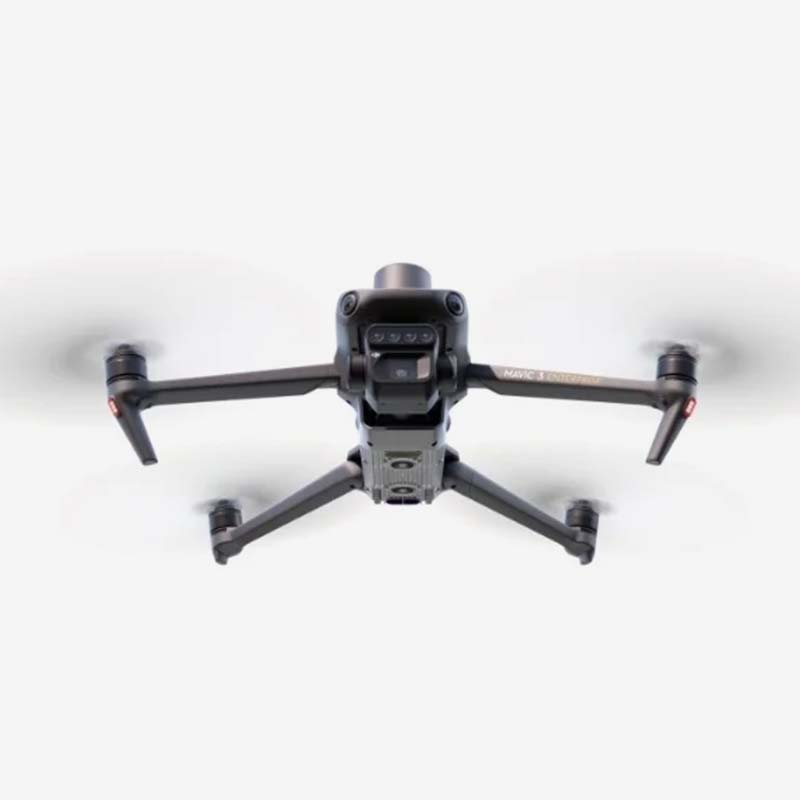
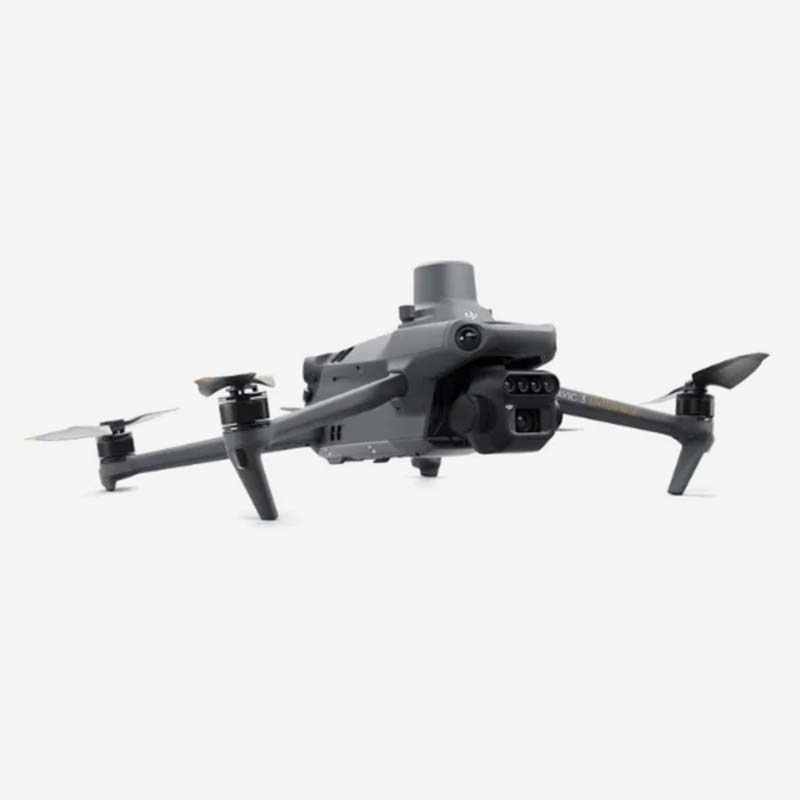
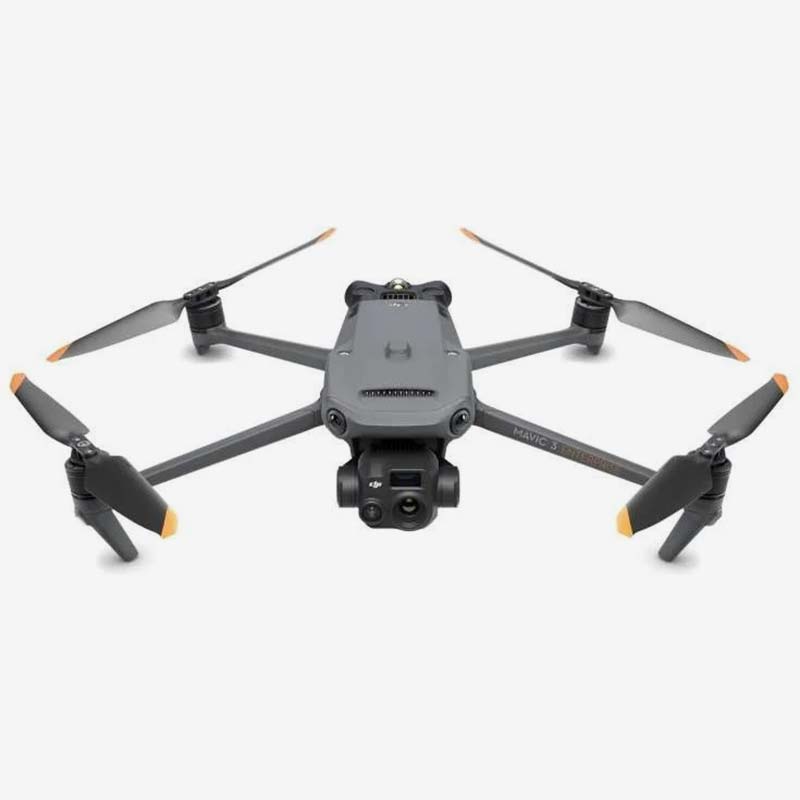
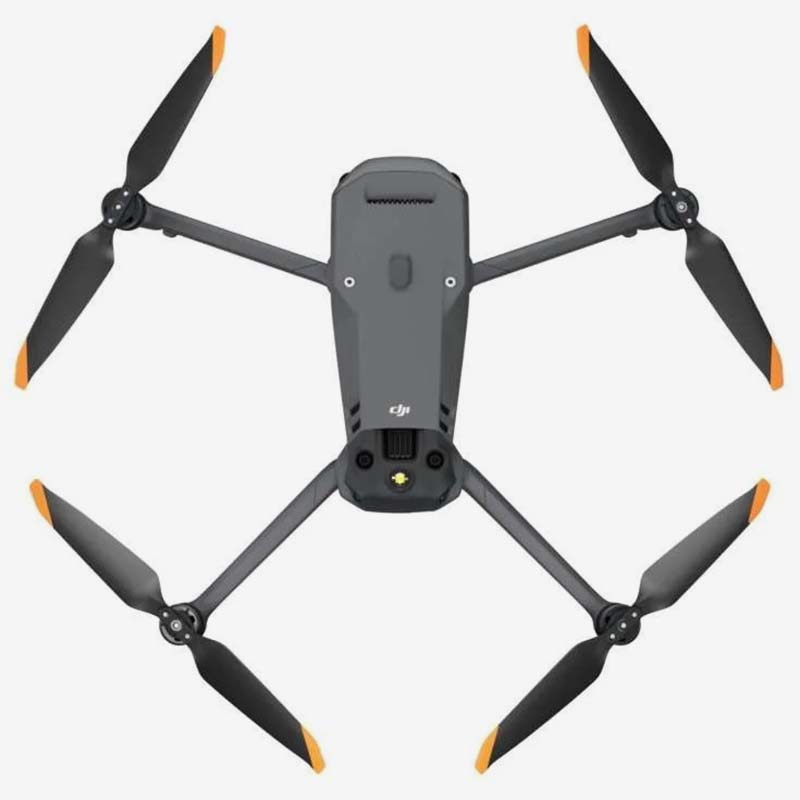
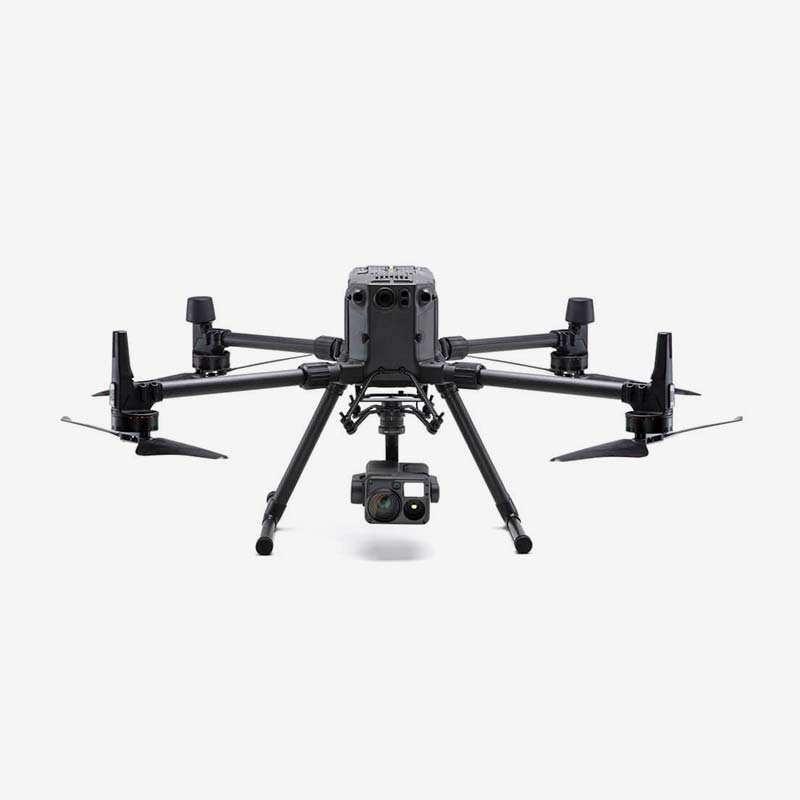
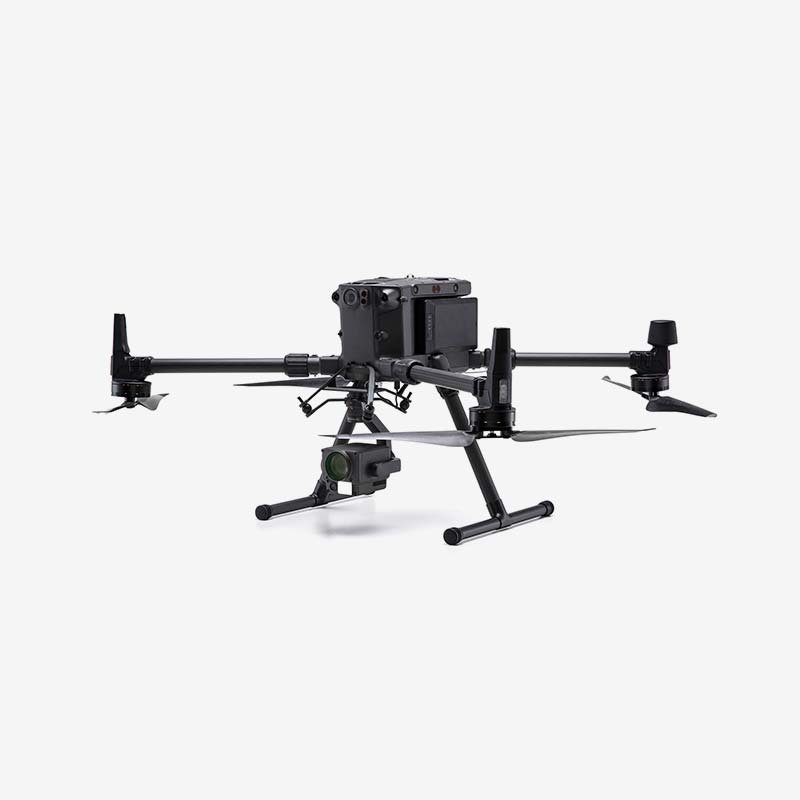

Reviews
There are no reviews yet.